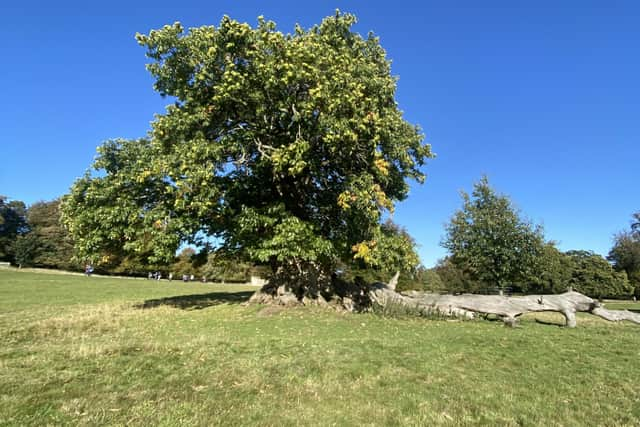Studley Royal Deer Park: The magnificent conker trees brought to Yorkshire by the Romans
The edible nuts associated with Christmas come from a different tree, the sweet chestnut (Castaneda saliva), and one of Yorkshire’s largest concentrations is in the deer park at Studley Royal near Ripon.
The Romans introduced sweet chestnuts to Britain as a ready source of protein. The nuts were ground into flour and cooked like polenta. By medieval times roasted chestnuts had become the popular winter food we know today.
Advertisement
Hide AdAdvertisement
Hide AdAt some point the tree acquired the alternative name of Spanish chestnut, a reference to the fissures at the base of their trunks being reminiscent of a flamenco dancer’s swirling skirt.


The Studley Royal sweet chestnuts were planted, like others around great country houses like Nostell Priory and Temple Newsam, to provide food for the herds of deer which were hunted by the nobility and their guests.
The Studley estate, now owned and managed by the National Trust, can be traced back to the 12th century and a map of the park first appeared in 1577. Studley Royal House was destroyed by fire in 1946 and not replaced.
The grounds and nearby Fountains Abbey are now a World Heritage Site.
Advertisement
Hide AdAdvertisement
Hide AdOther venerable sweet chestnut trees in Yorkshire are to be found at Burton Constable Hall near Driffield and in the garden of 18th century author Laurence Sterne’s house at Coxwold in the Howardian Hills.
Most sweet chestnuts on sale today - those that will end up on on Christmas tables or roasted on smouldering coals and sold by street vendors - are imported from France, Spain or the Balkans. Divested of their tough shells they are vacuum packed or canned.